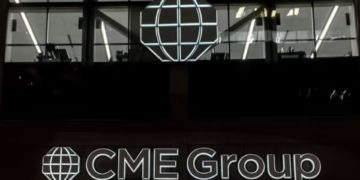Markets feared for a possible bubble bust, with Commerzbank stating: “In our opinion, a correction of the palladium price was long overdue. It is not yet possible to say whether yesterday’s plunge was the bursting of a bubble; for this to be the case, the price would need to fall even more sharply or further.”
The correction was indeed posted, while since May the asset was ranging between 1235-1600 area. At the beginning of September however, we have seen a remarkable rise, above the 5-month range. Technically speaking, we can claim that the bubble didn’t burst, but conversely the correction and the long-term consolidation was a correction of the 4-year rally. The precious metal has retraced more than 31% of year losses. Meanwhile, it holds above the 20-week SMA and 50-week SMA, which has been providing a strong Support area for the asset the past four quarters.
Theoretically speaking, however, palladium is strongly positively correlated with the car industry as it finds 80% of its demand from gasoline auto cars. The source of palladium’s performance the last decade, though, was and still is the global supply deficit, fired by the car industry demand. Considering only the 2017 supply, the deficit reached 875K ounces, while in 2018 it was at 121K ounces. Meanwhile, this year the palladium market is expected to present a deficit of up to 809K ounces.
Despite the consolidation in Palladium’s prices, it is unlikely that the demand for palladium will change significantly the next few years. This could be explained by the tighter emission standards, as despite the overall economic slowdown, the auto sales slowdown in China (due to tax cuts) and US, the higher recycling volume, and the high price of palladium, car-makers must meet emission standards. Hence, they are quite “forced” to use palladium, as it is the metal used in catalyst converters to reduce emissions from gasoline engines.

In Europe on the other hand, the swing from diesel engines has hit European producers and as a consequence platinum price as well, which was the most preferable metal for reducing emissions in diesel engines. This balanced the risks stated above, for palladium’s price, as diesel engines are “undesirable”.
The expensive palladium and unwelcome platinum could eventually push manufacturers to turn to potential PGM-free engines (PGM stands for Platinum Group Metals). However, this would take time. A potential approach for manufacturers could be to substitute palladium for platinum on engines other than diesel ones. However, this is a scenario that has not been accomplished yet and seems unlikely to happen for now.
So far, the legislation and the taxation for diesel engines, but also the general tighter emission standards, have boosted the substitution of diesel engines into alternative engines, such as electric, hybrid and petrol which all require the use of more palladium. Gasoline vehicles are expected to maintain a majority market share to 2025 and to increase in absolute numbers including gasoline hybrids. These factors could keep palladium demand rising, unscathed from the economic slowdown and the higher recycling volume.
Meanwhile, in China, the world’s largest consumer, Morgan Stanley reported that new legislation will be applied from 2020 which will require 30% more PGMs on each vehicle. This is another factor that is likely to keep demand high, despite the already overextended palladium price at 1662.

As Norilsk Nickel Group, one of the largest palladium mining companies stated: “The demand for palladium is growing.” “Per unit PGM consumption in hybrid cars is higher than in traditional vehicles with the same ICE volume; accordingly, we expect palladium consumption to increase by 3 mln oz by 2025. “
Additionally, according to research from BASF, the world’s leading supplier of catalysts, demand for palladium in China is expected to grow from 2.332 million ounces to 3.429 million ounces by 2022.
As the supply deficit is more in favour of palladium than platinum or any other PGM metal, the palladium price is expected to extend its recent rally. Currently, palladium is accelerating higher, above 1,650. Having rejected the Resistance area at the upper line of 5-month range at 1609.85 on March 21, any pullback could be considered once again as a correction.











































